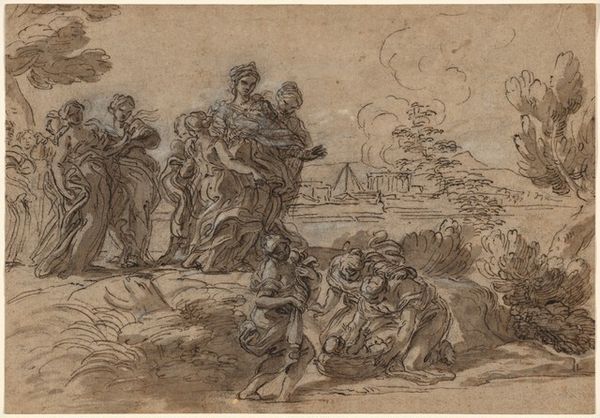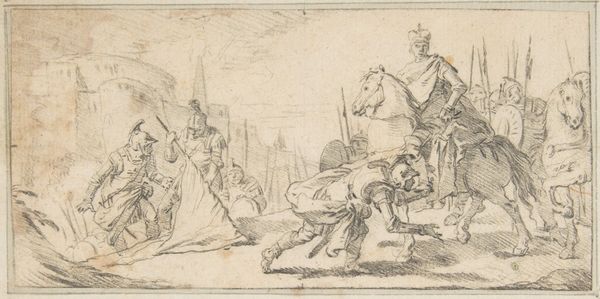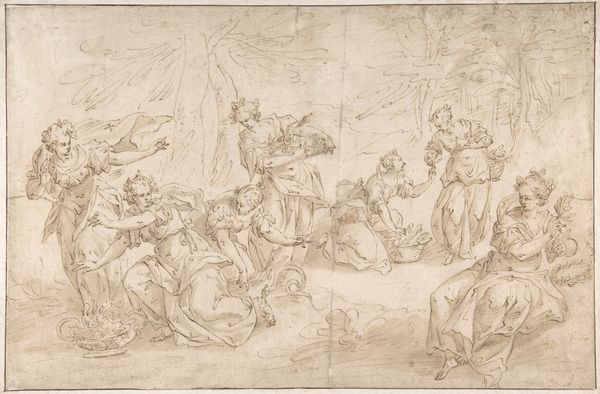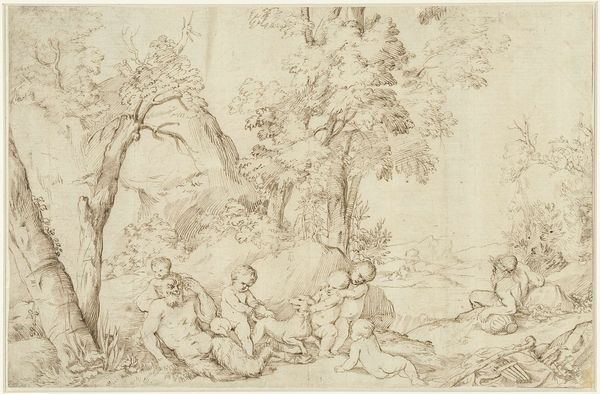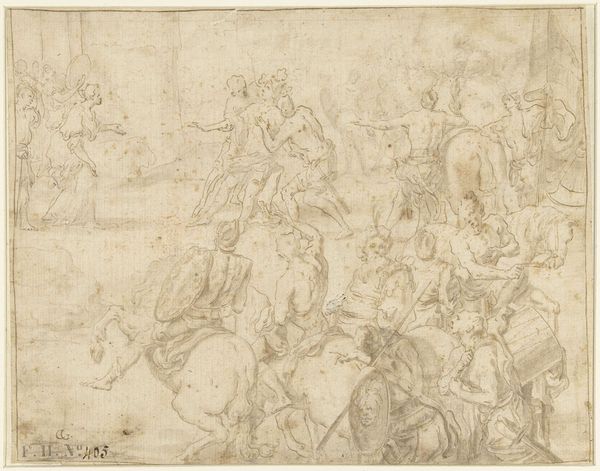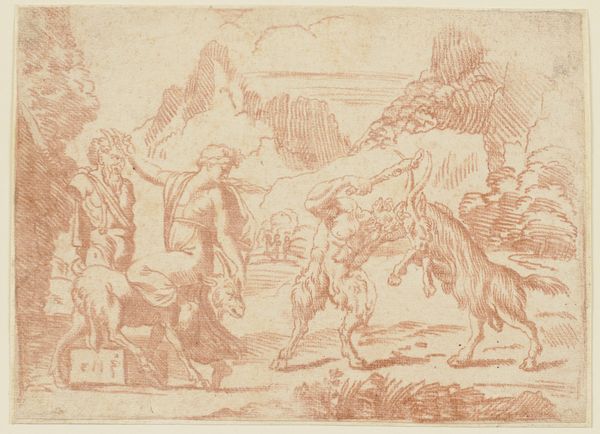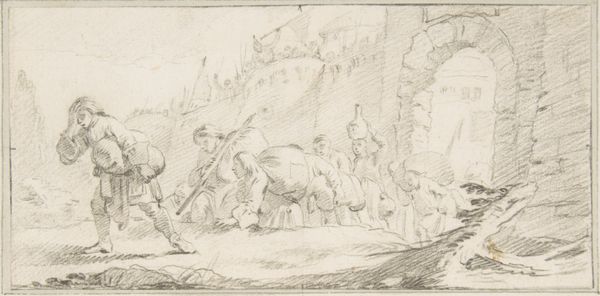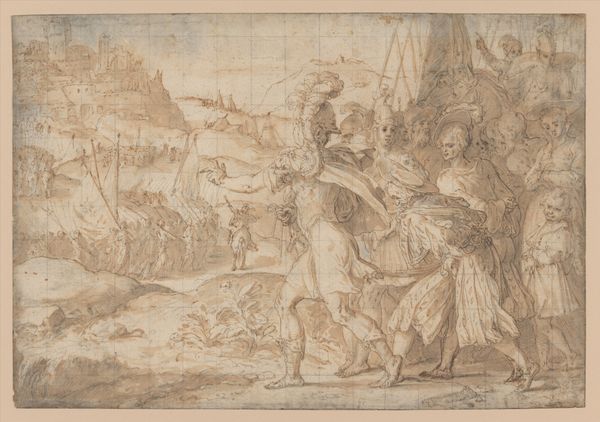
drawing, ink, pen
#
drawing
#
baroque
#
pen sketch
#
pencil sketch
#
landscape
#
figuration
#
ink
#
pen work
#
pen
#
history-painting
Dimensions: height 142 mm, width 184 mm
Copyright: Rijks Museum: Open Domain
Curator: Welcome. Here we have a drawing from 1682 by Raymond de Lafage, titled *Saint Anthony of Padua Kneeling in a Landscape.* It's held at the Rijksmuseum and rendered in pen and ink. Editor: Wow, talk about ephemeral! It’s like a dream caught in mid-flight. So airy, so light. What a master of suggestion. Curator: Note the composition: The dramatic contrast between the meticulously rendered foreground and the suggestive background. Consider also the interplay of light and shadow, creating depth despite the limitations of the medium. De Lafage masterfully controls tonal values with a bare minimum of hatching. Editor: It feels incredibly intimate, almost as though we're eavesdropping on a very personal moment of devotion. But who else is there? See the monk lying back and resting on a cloud in the landscape? A funny touch, making devotion look awfully dreamy. Curator: Indeed. The spatial arrangement evokes a sense of spiritual ascent. Note the positioning of St. Anthony, grounded, but reaching towards the ethereal vision of the Virgin and Child. Semiotically, it functions as a visual representation of piety. The use of line, particularly the density and variations of pressure, effectively communicates both material and spiritual qualities. Editor: What’s striking is how current it looks, even now. That raw energy, the open composition...it’s not what one typically imagines for Baroque art. It breathes; you know? The artist really invites you in, not just to observe but to imagine. Curator: It is quite an outstanding testament to the possibilities inherent within line and form. Editor: Yes, truly transformative, I would say. Now I almost want to get down on my own knees, just to experience a vision.
Comments
No comments
Be the first to comment and join the conversation on the ultimate creative platform.
